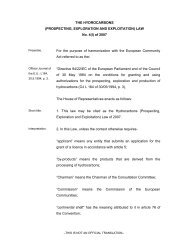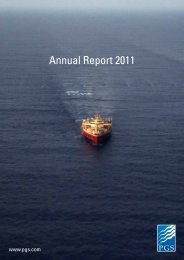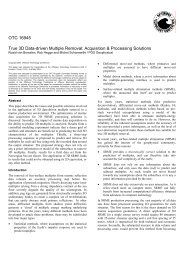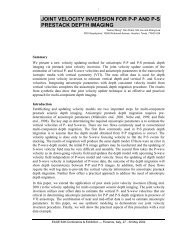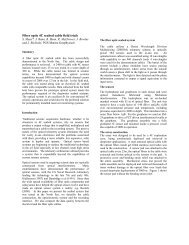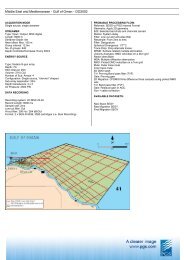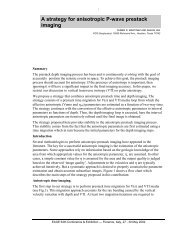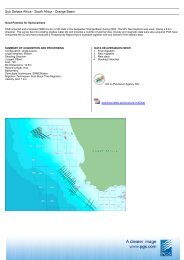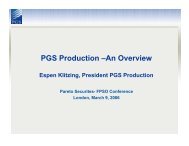Arrow Prospectus - PGS
Arrow Prospectus - PGS
Arrow Prospectus - PGS
Create successful ePaper yourself
Turn your PDF publications into a flip-book with our unique Google optimized e-Paper software.
ARROW SEISMIC ASA – INITIAL PUBLIC OFFERING<br />
financial assets at fair value through profit or loss. This is likely for financial instruments which qualifies for or<br />
optional are classified as, financial assets at fair value trough profit and loss.<br />
Financial instruments that are classified as at fair value through profit or loss are carried at fair value as observed<br />
in the market at the balance sheet date, with no deduction for costs relating to the sale. Financial assets at fair<br />
value trough profit or loss are classified as current assets.<br />
Changes in the fair value of financial instruments classified as financial instruments at fair value through profit<br />
or loss are recognised in the income statement and included in the net financial income/expenses.<br />
Held-to-maturity investments<br />
Held-to-maturity investments are non-derivative assets which carry fixed or determinable payments and fixed<br />
maturities and which the Group has the positive intention and ability to hold to maturity, except those<br />
investments classified as financial assets at fair value trough profit or loss, available for sale investments or loans<br />
and receivables.<br />
Held-to-maturity investments are measured at amortised cost using the effective interest method. The effective<br />
interest method is used to calculate the amortised cost and to allocate interest income or interest cost over a<br />
relevant period. Profit or loss are recognised in profit and loss through the amortisation process or when the<br />
financial instrument (a) are derecognised, (b) are impaired or (c) the carrying amount increases when earlier<br />
impairments are reversed.<br />
Financial instruments that are held to maturity are included in the non-current asset unless the maturity date is<br />
less than 12 months after the balance sheet date.<br />
Loans and receivables<br />
Loans and receivables are non-derivative financial assets with fixed or determinable payments that are not<br />
quoted in an active market, except those instruments classified as financial assets at fair value through profit and<br />
loss or available for sale.<br />
Loans and receivables are measured at amortised cost using the effective interest method less any allowance for<br />
impairment. Gains and losses are recognised in the income statement when the loans and receivables are<br />
derecognised or impaired, as well as through the amortisation process.<br />
Loans and receivables are included in current assets, except for maturities greater than 12 months after the<br />
balance sheet date. These are classified as non-current assets.<br />
Available for sale investments<br />
All other financial instruments, with the exception of loans and receivables originally issued by the company, are<br />
classified as available for sale. They are included in current assets, except for investments which the Group have<br />
the intention to sell within 12 months after the balance sheet date.<br />
Financial instruments that are classified as available for sale through profit or loss are carried at fair value as<br />
observed in the market at the balance sheet date, with no deduction for costs relating to the sale.<br />
Gain or loss resulting from changes in the fair value of financial investments classified as available for sale are<br />
recognised directly in equity until the investment has been disposed of. When the investment is disposed of, the<br />
accumulated gain or loss on the financial instrument that has previously been recognised in equity will then be<br />
reversed and the gain or loss will be recognised in the income statement. Interest earned or paid on the<br />
investment is reported as interest income or expense using the effective interest rate. Dividends earned on<br />
investments are recognised in the income statement as “Dividends received” when the right of payment has been<br />
established.<br />
Fair value<br />
The fair value of investments that are actively traded in organised financial markets is determined by reference to<br />
quoted market bid prices at the close of business on the balance sheet date. For investments where there is no<br />
active market, fair value is determined using valuation techniques. Such techniques include using recent arm’s<br />
length market transactions; reference to the current market value of another instrument, which is substantially the<br />
same; discounted cash flow analysis or other valuation models.<br />
59



